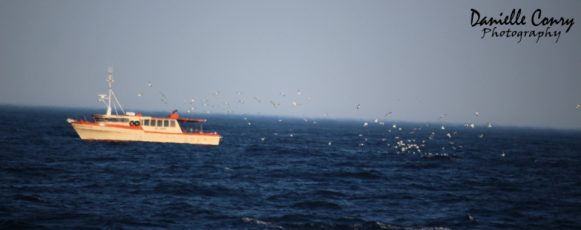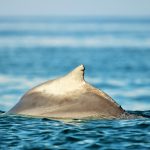Demersal Shark Longlining

Over the last month or so, some of Plettenberg Bay’s inhabitants may have noticed the occasional presence of a somewhat strange looking vessel within and around the bay. This vessel, it turns out, belongs to South Africa’s demersal shark longlining fishery.
This fishery is relatively small, with only six permit-holders off the South African coastline, and targets a number of shark, skate and ray species. The fishery primarily concentrates on five species: smooth-hound sharks (Mustelus mustelus), soupfin sharks (Galeorhinus galeus), copper sharks (Carcharhinus brachyurus), dusky sharks (Carcharhinus obscurus) and whitespotted smooth-hound sharks (Mustelus palumbes). However, the fishery also targets spiny dogfish (Squalus spp.), St. Joseph sharks (Callorhinchus capensis) and skates and rays. While not targeted by the fishery, cape gurnard (Chelidonichthys capensis), jacopever (Helicolinus dactylopterus) and smooth hammerhead sharks (Sphyrna zygaena) may be landed if caught. The consumption of shark meat is not popular in South Africa and the majority of products derived from demersal shark landings in South Africa are exported to Australia, principally for consumption in the fish-and-chips trade.
The fishery is prohibited from targeting bull sharks (Carcharhinus leucas), sharks of the genus Poroderma and Haploblepharus (catsharks and shysharks), any oceanic sharks such as mako, blue, oceanic white-tip, thresher and hammerhead sharks, protected species such as ragged-tooth sharks (Carcharias taurus), great white sharks (Carcharodon carcharias) and sawfishes, and all fish of the Class Osteichthyes (bony fish), with the exception of hake and kingklip. If caught, permit conditions require that the greatest care must be taken by the fishery to release any of these protected and prohibited species alive, and that any dead specimens should be retained and declared to a Fishery Control Officer 24 hours before landing the catch. Any bycatch of hake and kingklip (combined) may not exceed 2 % of the landed catch.
The fishery is currently restricted to coastal waters between Cape Agulhas in the Western Cape Province and East London in the Eastern Cape Province. Although there are no catch restrictions for any of the demersal shark species caught in South Africa, the fishery is currently restricted to a Total Allowable Effort (TAE) of six vessels. These vessels fish for sharks by deploying weighted lines with numerous baited hooks that hang along the sea floor. While this fishing method has minimal impacts on benthic habitats, there may be problems with bycatch, especially that of seabirds, turtles and linefish. However, the extent of this problem, and any solutions thereof, can only be determined through an Observer program. This is something that is currently lacking within the fishery. Thankfully, seabird bycatch has been reduced significantly by the implementation of bird-scaring lines (or tori lines) which help to keep seabirds from ingesting the baited hooks as they are deployed. The use of these bird-scaring lines is now compulsory and part of the fishery’s permit conditions.
The slow growth, late maturity and low fecundity of most sharks and rays make them vulnerable to overexploitation and indeed many shark populations have been reduced drastically. However, when compared with many other developing countries, the South African demersal shark longline fishery is relatively well controlled and managed.


